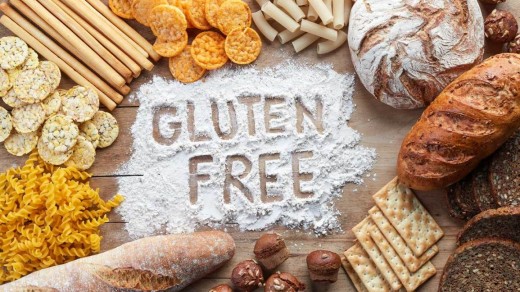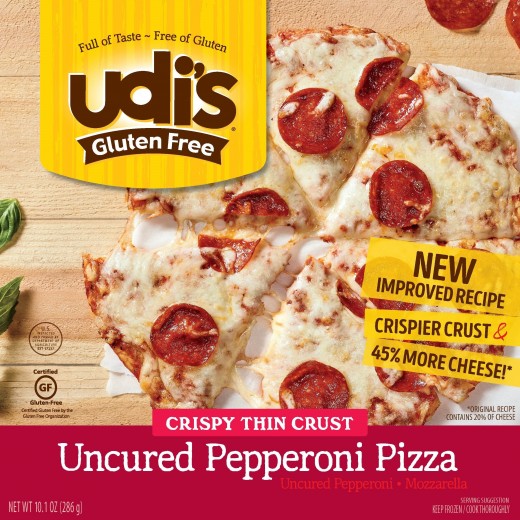- HubPages»
- Food and Cooking»
- Food Safety»
- Food Allergies
Becoming Gluten Free

Is Changing Your Diet Enough
A lot of people today, are changing over to a gluten free diet. It seems that this new way of eating has a positive affect on people. Right now in every grocery store they have isle's with these products on it that you can purchase and even frozen food.
I have yet to say I have tried it but have been researching about becoming gluten free and the real truth is that you not only need to stop eating food that contains gluten but also change your shampoo's, conditioners, make up. soaps and body washes and yes even your toilet paper.
Who would ever think that lotion would have gluten in it but if you think about it anything that touches your skin will absorb in to the skin as well. Especially make up, which stays on for 8 hours or more.
At the gluten free mall online http://www.celiac.com/glutenfreemall/ you can buy everything from baking ingredients to vitamins. They even have gluten free clothing.
Why Become Gluten Free
Becoming gluten free became a well known diet for people with Celiacs disease, which is destruction of the intestinal wall, causing your body to not be able to absorb vital nutrients. The damage is caused by people being allergic to wheat, rye, barley, and oats.
A lot of people who have intestinal problems have resorted to going gluten free in their diet. This has been known to help with stomach irritation, gas, bloating, and gerd.
We are what we eat. I am going to try something gluten free this weekend and I will surely let you know how it taste and if I think its worth changing over too. It has also helped people to lose weight.
Over the years and all the abuse we have put our bodies through with so much food, I can see where bread lovers, pasta lovers, and carb lovers could have intolerance to wheat, oats, and barley.
A Totally Gluten Free Pizza

Foods to Avoid When Becoming Gluten Free
According to the Mayo Clinic these foods should be avoided on a gluten free diet:
- Beer
- Breads
- Cakes and pies
- Candies
- Cereals
- Cookies and crackers
- Croutons
- French fries
- Gravies
- Imitation meat or seafood
- Matzo
- Pastas
- Processed luncheon meats
- Salad dressings
- Sauces, including soy sauce
- Seasoned rice mixes
- Seasoned snack foods, such as potato and tortilla chips
- Self-basting poultry
- Soups and soup bases
- Vegetables in sauce
Certain grains, such as oats, can be contaminated with wheat during growing and processing stages of production. For this reason, doctors and dietitians generally recommend avoiding oats unless they are specifically labeled gluten-free.
The cons of a gluten free diet are not getting enough nutrients that grains give us. If not done properly or with supplements, people on gluten free diets can become deficient in :
- Iron
- Calcium
- Fiber
- Thiamin
- Riboflavin
- Niacin
- Folate
These vitamins are essential to our overall health. Taking a multi vitamin while on a gluten free diet should help aid in becoming vitamin deficient.
Im not refering to becoming gluten free as a cure all but it's worth trying by all means. Anyone want to join me and see how you feel? Stay tuned for an update on my
Photo
Recipe for Gluten Free Pizza
For tomato sauce
- 1 (15-ounce) can crushed tomatoes with added purée
- 4 1/2 teaspoons extra-virgin olive oil
- 1/2 teaspoon sugar
- 1/2 teaspoon fine sea salt
- 1/4 teaspoon dried oregano
For pizza crust
- 3/4 cup tapioca flour
- 1/2 cup white rice flour*
- 1/3 cup chickpea flour
- 1/3 cup sorghum flour
- 1 teaspoon xanthum gum
- 1 teaspoon fine sea salt
- 1/2 cup whole milk
- 2 1/4 teaspoons active dry yeast, from 1 (1/4-ounce) package
- 2 teaspoons sugar
- 2 large egg whites, lightly beaten
- 3 tablespoons plus 1 teaspoon extra-virgin olive oil
For topping
- 4 teaspoons extra-virgin olive oil
- 8 ounces fresh mozzarella, coarsely grated (about 1 1/2 cups)
- 1/4 ounce Parmigiano-Reggiano, finely grated (about 1 tablespoon)
- 4 large fresh basil leaves, roughly torn
- *Be sure to use white rice flour; brown will result in gritty pizza dough.
Special equipment:
- Special equipment: pizza stone or heavy baking sheet, baking peel or heavy baking sheet, parchment paper
Make tomato sauce In a 4-quart nonreactive saucepan over very low heat, stir together tomatoes and oil. Bring to simmer, cover partially, and continue simmering, stirring occasionally, until sauce is reduced to 1 cup, 20 to 25 minutes. Stir in sugar, salt, and oregano, cover. Keep warm or refrigerate, covered, up to 5 days.
Make pizza crust In bowl of electric mixer, whisk together tapioca flour, white rice flour, chickpea flour, sorghum flour, xanthum gum, and salt.
In small saucepan over moderate heat, stir together milk and 1/4 cup water and heat until warm but not hot to the touch, about 1 minute (the mixture should register between 105°F and 115° F on candy thermometer). Stir in yeast and sugar. Add milk–yeast mixture, egg whites, and 2 tablespoons oil to dry ingredients and, using paddle attachment, beat at medium speed, scraping bowl occasionally, until dough is very smooth and very thick, about 5 minutes.
Remove racks from oven, set pizza stone or heavy upturned baking sheet on bottom of oven, and preheat to 400°F. (Preheat at least 45 minutes if using pizza stone or 20 minutes if using baking sheet.)
Have ready two 12-inch squares parchment paper. Scrape half of dough onto each square and form each half into a ball. Coat each ball with 2 teaspoons oil, then use oiled fingertips to pat and stretch each ball into 9-inch-diameter round, 1/4 inch thick, with a 1/2-inch-thick border. Loosely cover rounds with plastic wrap and let rise in warm draft-free place until each pizza is about 10 inches in diameter, about 20 minutes.
Using baking peel, transfer 1 crust with parchment to preheated pizza stone and bake until top is puffed and firm and underside is crisp, 5 to 10 minutes. Using baking peel and discarding parchment paper, transfer baked crust to rack to cool. Bake second crust in same manner. (Baked crusts can be made ahead and frozen, wrapped in plastic wrap, up to 1 month. Thaw in 350°F oven until hot, 4 to 5 minutes, before topping and broiling.)
Top and broil pizzas Preheat broiler. Transfer baked crusts to 2 large baking sheets. Brush 1 teaspoon olive oil over each crust. Spread each with sauce, leaving 1/2-inch border bare, then sprinkle each with mozzarella and Parmigiano-Reggiano. Drizzle remaining 2 teaspoons olive oil over pizzas.
Broil pizzas about 4 inches from heat, rotating as needed for even browning, until cheese is bubbling and browned in places and crust is golden brown, 4 to 8 minutes. Scatter with basil, slice, and serve immediately.
(recipes.com)








